$2M+ of lies to win power
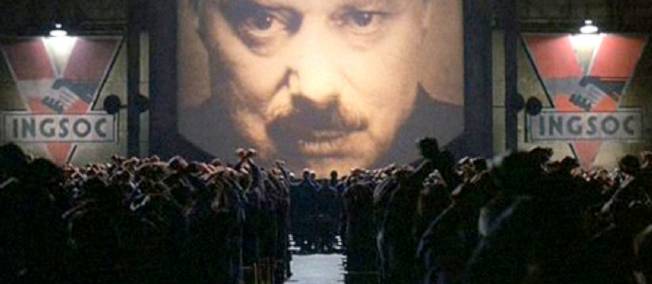
I believe in truth in advertising. So does the commercial TV regulator that demands evidence for any claim you want to make before they give your ad clearance to air. Unfortunately for the voters of NSW, political parties are allowed to say what they want in an ad because they aren't answerable to any of the rules mere brands and businesses have to conform to.
If I made a fraudulent claim for a client in an ad, (for instance the kind of price saving offer mobile phone plans were notorious for before being fined into transparent pricing), the ACCC or ASIC would come after me. This election has seen Labor and unions spend twice the Liberals. Most of that $2,500,000 was on ads that say electricity prices will go up if Baird sells 49% of the poles and wires. It's a lie.
Their ads scream this lie despite ACCC chairman Rod Simms saying this isn't the case. Even the Australian Energy regulator is on record that whoever owns the poles and wires in NSW after the election he will insist they reduce their prices by 20-30% over the next five years. There is no evidence for the claim made in Labor's ads that I believe would have satisfied the broadcast standards that commercial advertisers have to comply with. In fact, there is much historic evidence from previous power privatisations showing prices are lower outside government ownership. This has been acknowledged by such Labor luminaries as Bob Carr, Morris Iemma, Michael Costa and Anna Bligh when they attempted to sell the poles and wires under their governments.
It frustrates me as a professional marketer that in the 21st century political parties of any persuasion can play 1984 mind games with the truth and run them in prime time. The ABC Fact Check merely called Foley's ad pitch "spin". I prefer the robust language of former Labor Energy Minister and ACTU president Martin Ferguson. He says Foley's spin is "rank opportunism and scaremongering... sending a clear message he doesn't care about jobs and energy security."
Politicians' ad claims are officially accountable to... themselves
Here is the law (or lack of) that applies to political advertising as published by adstandards:
"Currently, there is no legal requirement for the content of political advertising to be factually correct. Complainants are advised to raise their concerns with the advertiser directly and/or with their local Member of Parliament."
Maybe we should just ban political advertising, we banned cigarette ads for telling us porkies.
Read MoreThe optimum lengths of social media
People now have short attention spans. So to connect you have to cut through. Keep it honest. Keep it simple. And keep it true to your brand. As for length, keep it short.
71 - 100 characters
Posts with 40 characters get 86% more engagement
Google+
25 characters
40 characters
Linked In
Posts 16 to 25 words long
Videos
Average length watched is 2.7 minutes
Read MoreThe average customer has an attention span of

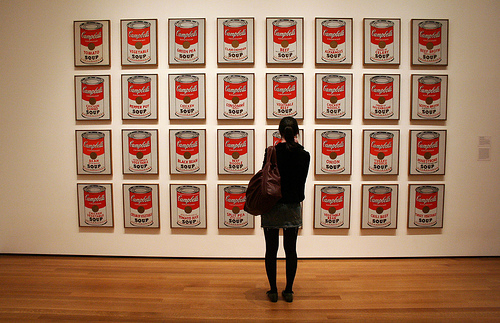
How does a brand catch a customer's interest when their attention span is now less than that of a goldfish? I spent a few seconds Googling to discover the average person's attention span has shrunk since 1998, by 11 minutes.
The average attention span today is 8 seconds
The National Center for Biotechnology Information says our attention span is now 1 second less than goldfish. What hope does a brand have to convince us to buy?
Consider a tube of toothpaste. The average main grocery buyer now spends less than 20 minutes in the supermarket for the big weekly shop. With over 10,000 items to choose from it's not surprising when faced with so many options brands are struggling to catch shoppers' interest. At the dental care section 27% of shoppers walk away without making a decision.
You may be aware Australians have never been better educated, the number of university graduates has almost quadrupled since 1986, from 6% to more than 21%. Are we any smarter or better prepared to make purchase decisions?
We are exposed to five times the quantity of information every day than we received 30 years ago, (you may be surprised just how many ads we are exposed to). Yet we have less free time to consider. The Economist explains that time poverty is a wealth syndrome, the more money we have the more we value our time and the more choices we are confronted with to spend that time. At the other extreme, cash strapped people have largely given up trying to decipher so much information, they are influenced by price like never before.
Price is increasingly winning over brand appeal. It's at the heart of the growing success of ALDI – less items to choose from, mostly unbranded, all at lower prices. This has seen their share of grocery sales reach 10%, a big slice of the market brands are mostly missing.
Even brands are struggling to be seen in Woolworths
According to Woolworths own research "more than a third of the items in Woolworths’ supermarket trolleys are purchased on promotion." That's an increase of 10% a year for the last two years.
"Australians hunting for bargains are the big winners, with one in four customers (25%) purchasing nearly half of the food and drinks in their trolley on special."
How do the retailers manipulate the time poor if not with price?
One journalist recently warned shoppers something brand marketers pay dearly for:
- The most expensive brands, or the ones being promoted heavily, will always be on the two shelves that sit between waist and shoulder height.
- Cheaper products are often stocked below knee height.
- Supermarkets know that you may only want milk so put it at the back of the store in the hope you’ll pick up items you don’t need.
Not only are the retailers asking brands for price rebates, Private Label substitutes are also catching once impregnable brands in a pincer movement. So if you believe in protecting the value of your brand you'll probably want to avoid discounting too often. Only the biggest and most desperate can afford to pay Coles and Woolies to be on promotion. In the past sales managers have encouraged the benefits of putting products on promotion to drive sales. Does it still work in the era of short attention spans?
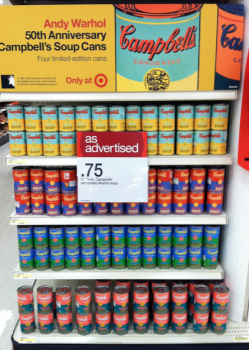
My associates at consumer benchmarking specialists B4P spent a year researching the impact of sales promotions at Point of Purchase (POP). The clients were several of the largest global FMCG companies that are active promoters in Australia's supermarkets, every week of the year. They tested awareness before promotion, cut through in-store, trial, impact on sales and recall several weeks later.
Across all promotion types, (price promotion, competitions, bundled offers and bonuses), shoppers generally don't notice any of it. This is despite multi-million dollar spends on displays, cardboard, posters, banners, gondola ends and shelf strips. Most in-store promotions have become invisible.
Earned and shared media can still gain attention
As we learned over seven years growing Pacific West from a $6million pa frozen seafood minnow to a $38million challenger brand, you can drive shoppers to your product by creating original content to tell your story and social media to spread the word. Just remember your audience has a short attention span. Here is a charming infographic that shows the optimum number of times to post content on social media channels.

Read More
Think big, or detail will kill your business

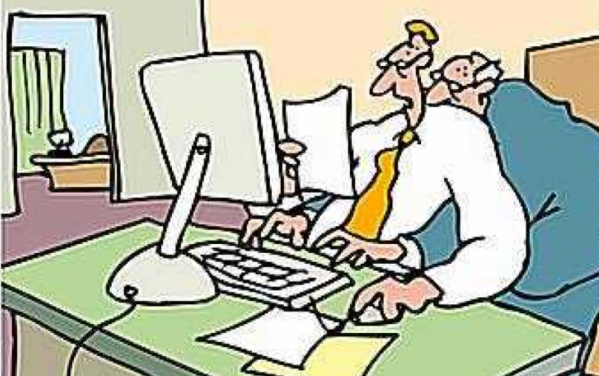
"Look, I said I'd bring you the report on micromanagement,
just give me a minute!"
Stop sweating the small stuff, especially now there's so much of it. New technologies allow us to gather data on just about everything. So it's become accepted practice for marketers and sales to invest in new ways to gather stats and report to senior management. For those of you wondering what's the point, it has now been proven the more a business spends on technology, CRM systems and sales data, the less well it performs in profitable conversions.
The more technology marketers use, the worse the results
Sounds like a contradiction, but the research undertaken by Peter Strohkorb into sales and marketing collaboration in 2013/4, simply proves the more systems teams add the worse the sales results. It's symptomatic of what the authors of Blue Ocean Strategy postulated over a decade ago. A typical strategic plan is usually based on a plethora of research from silos across the business which forces management to dwell on detail. Management becomes paralyzed by information overload.
The businesses that thrive are the ones that step back and look at the big picture using a customer centric view of what could be possible. Here's how it works.
Focus on the big picture to create a Blue Ocean Strategy
| Head to head competition | Blue Ocean creation | ||
| Industry | Focus on rivals within industry | Looks across alternative industries | |
| Strategic group | Focus on position against competitors | Looks across strategic groups | |
| Buyer group | Focus on better surving current buyers | Redifines who buyers can be | |
| Scope of product /service | Focus on costs/maximising value of current offer | Looks across complementary products/services | |
| Functional/emotional orientation | Focus on price/performance improvement | Rethinks the orientation of the industry | |
| Time | Reacts to industry changes as they happen | Participates in shaping external trends over time |
With a Blue Ocean strategy, you can implement a clear brand building campaign
We've found time and again, once clients re-visit what they can be, the task of growing the business becomes clear. Our methods to help create clear differentiation set the business up for challenger brand growth. With a single minded compelling tag line that sets them apart, big picture thinking helps refresh the business. There is new enthusiasm we harness to recreate the brand and relaunch. The way is now clear to become a price setter, not taker and drive sales conversions.
See some of the ways a refreshed brand can improve profitability.
Read MoreFor a nation of gamblers we're marketing risk averse
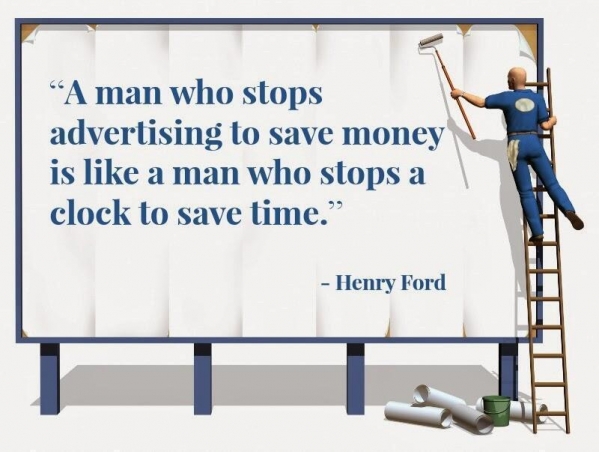
The companies that rated best for effective marketing, according to a recent Gartner study, were the ones that spent the most time understanding their customers. Businesses that are introspective and fearful of action will lose sales to those actively talking to customers and prospects.
How do you guarantee marketing success?
Jan-Patrick Schmitz, CEO of Montblanc North America, says "it obviously starts with the CEO. If he or she doesn’t understand that the business is about the customer and not operations, the CMO is going to have an uphill battle. Understanding your customer is about understanding what your business is and what your business will grow into.”
It's not a lottery, once you understand what customers want from your product or service, marketers that advocate for the customer in the boardroom will win.
Get the message right, then the risks are reduced irrespective of the mediums you then try. If you do understand your customers true needs and what they value most, and built your offer to satisfy those desires, it's time to check out the latest ways to advertise and connect.
Read MoreAussie business struggles, time for a creative way out


Will our kids ever be able to afford to buy a house? Can they even afford to rent? Here in Woolloomooloo 2 bed flats start at $1,000 a week, unfurnished! Unemployment is on the way up, mining investment on the way down. Coles and Woolies continue to squeeze farmers and FMCG brands while bricks and mortar retail is flat.
The big 4 banks are making record profits on higher margins than ever. If you are a small to medium business they probably won't give you a loan. 20 years ago 75% of bank lending was to business, now 75% goes to funding ballooning house prices.
This chart shows the decline in business investment post GFC
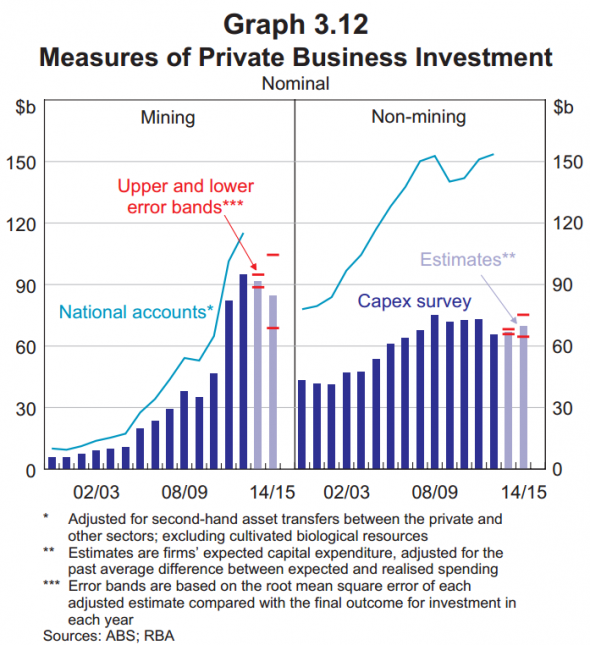
If businesses aren't investing in themselves, how can they grow let alone survive as the Internet destroys traditional business models?
Most managers have spent the last 6 years cutting and seeking efficiencies, hoping if they hang on long enough the market will recover. While local businesses seem to think it's conditions that are tough, World Bank figures show the world is booming – output was up $US75 trillion last year, which is about 20 per cent higher than the pre-GFC peak. 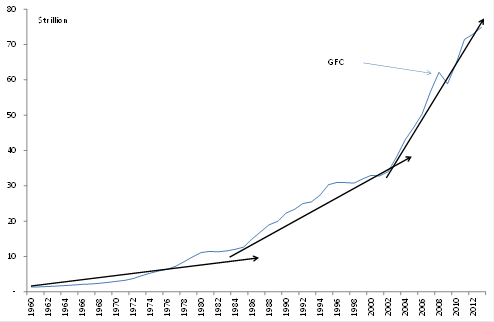
The world is moving on
Australians need to look outwards and recognise there isn't going to be a return to the way things were, the new reality is more rapid change and creative destruction. I use the word creative discerningly. It's the best way to describe the increasingly global competitive situation most businesses are struggling to get their heads around.
Historically change came slowly and could be managed by gradual adjustments of pricing, distribution or inputs. Not any more.
Enabled by the Internet, we now have Google replacing entire distribution channels with a search box. The Cloud has enabled brands such as Xero to offer with a lower cost and better service to leapfrog long established businesses like MYOB that relied on annual software upgrades. Social media has empowered determined consumers to "out" entrenched self-serving business practices, just look at CommBank's conflicted financial advice scandal that could cost it over $100million. (Or ANZ's Timbercorp scam and Macquarie's financial planners rort.)
These are all examples of a new business environment. New challenges require new thinking. A survey of over 300,0000 managers published by Harvard Business Review shows both CEOs and the next 3 levels of management aren't equipped to think outside the square.
The most important skills as rated by managers
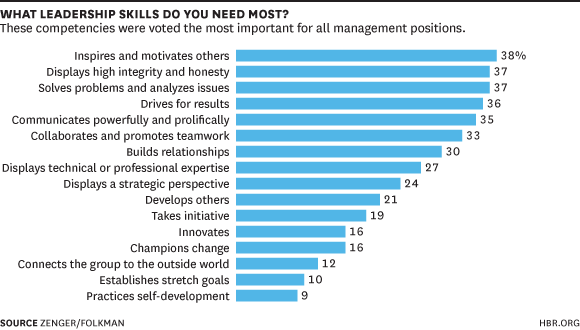
Perhaps the skills that are most needed today to deal with the rapid pace of change are the ones required to find creative ways to refresh and relaunch a business. Yet the survey found these are the least valued by management. Can you imagine how the people behind some of Australia's most successful businesses would rank themselves for the skills on the list? Like the young pair behind Atlassian, ten years ago a start up now worth $3.5billion. Or Boost Juice, Cochlear or Challenger, Seek or Xero. How important to their success are the more creative skills most managers in the survey dismiss?
Creative thinking skills
Innovates
Champions change
Connects the group to the outside world
Establishes stretch goals
Practices self-development
You may be interested to see evidence of how creative thinking adds value in this time of digital disruption. UNO helps challenger brands grow by encouraging and mentoring these creative skills that most managers have underutilised. Download our formula for growing challenger brands here.
UNO's one time client at Choice Christopher Zinn explains more on the new influence of the determined consumer.
Read MoreWant to see where marketing is headed?
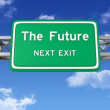
Technology is changing everything in our world. Marketing isn't just following the trends, today marketers are actually more likely to be using new technologies to drive change within businesses than the IT department.
I wrote recently that Gartner has found the average CMO now spends more on IT than the CIO. It's all about understanding what the customer wants, then finding what technology can now do to give it to them.
Big Data driven future for marketers
Here is a chart I came across that helps explain where we are today and where we are heading. Sooner rather than later.
Just click for a bigger view of the future of marketing.
Read MoreWant a strong brand? Here's one we prepared earlier
What's in a brand name?
Money in the bank if you choose the right one, or an uphill battle and wasted dollars if you get it wrong.
Your business is your baby, and just like your first child, choosing a name can be fraught. Rather than show stats or a share a list of "most popular brand names of 2014" or cherry picked research to explain the pros and cons of what makes a good brand, I'm going to share 30+ years of trial and error and what it's shown me actually works in the real world. Not just what sounds good when shared with your spouse when working through the choices lying in bed late at night.
How a brand name change delievered a 3000% return
City Mutual had been around for over 100 years, yet onlythan 2 in 100 Australians recognised it. Three years later it was the best known investment and insurance group after AMP, having changed it's name to Capita.
Buying IBM means you won't get fired
Managers for decades have filled tenders, often at higher prices, knowing the board would never question the decision. Every time a client comes to me saying they want to call their business a series of initials they quickly use IBM as an example of why it will work. You can forgive their missunderstanding of what makes a brand. Unless your over 100 years of age you would necessarily know International Business Machines gained it's reputation for deivering reliable and ofte leading edge typewriters and for fifty years before it abreviated it's name to the initials that sat kneatly in the corner of millions of machines in office desks around the world. Today they business is in consulting, so Business Machines wouldn't be apt.
How to make a splash
Local businesses need to think of global consequences
When IFX Markets, a UK listed financial services business wanted to test market a business model in Australia for global roll out, the question of the right name came up very early in discussions.
Read MoreHave Aussies forgotten how to make things?


If you're anything like me, you enjoy a weekend trip to Bunnings. Today there are more things to buy than ever, for less than when our fathers took us to the local hardware decades ago. Where once tools and taps and barrows and bolts were manufactured in Australia, most of this stuff is made in China.
Most of us would agree Australia's manufacturing sector has been destroyed by cheap Chinese imports. What hope is there for Australian made? With the help of some lateral thinking, maybe more than most think.
The end of the made in China boom?
Robert Gottliebsen reports China's remarkable gains in productivity and standards of living were all achieved with borrowed capital and technology. Alan Greenspan points out that no Chinese companies feature on the annual lists of the world's most innovative companies -- nearly half of those lists are made up of American companies. This is leading to a narrowing productivity gap between China and the US, which is putting serious pressure on the Chinese economy.
That's right, don't underestimate the power of first world creative thinking when matched against the cheap cost of third world manual labour. Here are a couple of examples from my dealings over the last year.
Australia leads the world in compression fabric design
 I remember twenty years ago most Australian clothing manufacturers closed their local factories and set up workshops in Fiji where labour was cheap. Now most clothes sold here, even in stores like Zara, are made in China or Pakistan by one suspects slave labour. Yet in some areas of fashion we continue to lead the world.
I remember twenty years ago most Australian clothing manufacturers closed their local factories and set up workshops in Fiji where labour was cheap. Now most clothes sold here, even in stores like Zara, are made in China or Pakistan by one suspects slave labour. Yet in some areas of fashion we continue to lead the world.
Our client Quick Response is a local family business of almost 20 years who are still designing and making swimwear and compression garments locally. What's more, they manufacture using Australian made fabric.
In fact Australian compression fabric is the most technologically advanced in the world. It's the result of research and innovation that over the years has been tried and tested by our champion swimmers in those body hugging suits.
UNO have built an e-commerce site so you can buy the world's-best QRS compression garments direct, for less than sports brands that are usually made in China and Indonesian from inferior fabric.
Still open: a local manufacturer of timber shutters
Thirteen years ago Open Shutters was one of UNO's foundation clients. While cheap Chinese shutters have decimated most local manufacturers, Open continue to do business by concentrating on innovation. An obsession with quality design, investing in advanced machinery and only using sustainable timbers continues set them apart.
While white paint may disguise the compromises of Chinese made shutters in the short term, having been in the market now for several years they are proving to peel, bow, crack and break. The fact Open's product is built to last sees them gaining repeat sales over two decades on. What really makes the biggest difference is the way Open think: 
What truly lifts them to the top of their category in the world is the design thinking process they apply in everything they do. When suppliers tell local architects or designers their ideas aren't possible, Open finds a creative way to deliver.
Could robots save Australian manufacturing
If you still doubt the power of creative thinking over cheap labour, consider this. Last year McKinsey released a list of the things that would change the business world. Near the top of the list was advanced robotics: robots with better and better senses, dexterity and intelligence that can automate tasks or help humans or even operate on us more effectively than... humans.
To quote the numbers:
• 170%: growth in sales of industrial robots 2009-2011,
• 320 million: manufacturing workers (12% of global workforce), and
• $2-3 million: cost of the 250 million annual major surgeries.
Here's what robots could do:
"Advances could make it practical to substitute robots for human labor in more manufacturing tasks, as well as in a growing number of service jobs, such as cleaning and maintenance. This technology could also enable new types of surgical robots."
Closer to home, when I underwent keyhole surgery a few months back, I could have chosen to be operated on by a robot designed in the US for remote controlled surgery on the battlefield. My gap cover wasn't enough to cover the extra cost, but the cost gap will quickly close. It's another reminder the changes in our lives will more likely be shaped by innovation than the global oversupply of cheap labour.
If you are a manufacturer the message is clear, forget cost cutting, start thinking and get marketing.
Read more on how to rethink your business.
Read MorePerception or Reality? Customers now decide

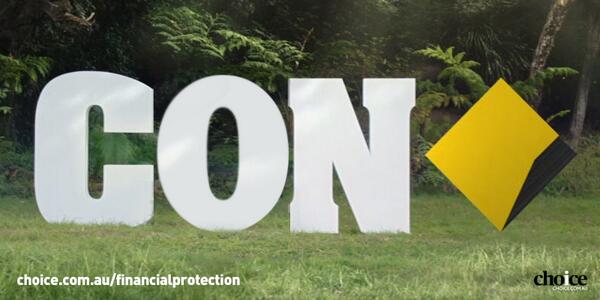
Over 50% of people don’t trust financial advisers. So I was told on the news last night. If you have ever been to see an advisor you’ve probably come away with the perception that they aren’t telling you everything straight. Commbank’s multi-million dollar financial planning scandal has proved perception IS reality when it comes to advisors.
For decades when a business advertises a product, whether baked beans or an investment, the words and claims made are open to scrutiny and have to be THE TRUTH. You have to deliver on the promise or you are liable under a number of ad standards, ASIC and ACCC rules. If you sell a financial product face-to-face most of these rules don’t seem to apply or be enforced.
Big 4 Banks still traditional marketers
What the big 4 banks and AMP have got away with is a classic exercise in traditional marketing methodology – control the distribution channel and you control both pricing and product. By using different brands they have been able to sell the same products to an unsuspecting public. Most people haven't realised 80% of advisors work for groups owned or aligned with just 5 product providers.
Most people think they are seeking financial advice, when what they are getting is a sales pitch. How can anyone be given genuine choice when of 18,000 advisors only 31 are truly independent? We’ve all been buying Home Brand super for years and haven’t known it. Here is a list of just some of the hundreds of “brands” just 5 providers have sold their own products under:
Cavendish AMP
Charter Financial Planning AMP
Garrisons AMP
Genesys AMP
Hillross Financial Planning AMP
Ipac AMP
Avanteos Commonwealth Bank
Colonial First State Commonwealth Bank
Commonwealth Financial Planning Commonwealth Bank
Count Financial Commonwealth Bank
Financial Wisdom Commonwealth Bank
Witaker McNaught Commonwealth Bank
Apogee NAB
Garvan Financial Planning NAB
Godfrey Pembroke NAB
Lend Lease Financial Planning NAB
Meritum Financial NAB
MLC NAB
Elders Financial Planning ANZ
Financial Services Partners ANZ
Millenium3 ANZ
OnePath ANZ
RI Advice (RetireInvest) ANZ
Sentry ANZ
Asgard Westpac
BT Westpac
Pact Accountants Investment Group Westpac
KPMG Financial Planning Westpac
Securitor Financial Group Westpac
A couple of rogue CommBank advisors who ripped off investors for millions is just the tip of the iceberg of poor brand values. Ian Narev says the business won’t suffer. I suggest the era of brand equity built upon decades of million dollar perception-shaping advertising is over. The Internet has democratised the share of mind of customers. Does Narev not understand this? Instead of changing his business model he returned from holidays to push the button on a million+ dollar ad campaign trying to reassure customers they are fixing things. This old school reaction won't preserve brand equity long term. Here’s proof.
Try Googling CommBank financial planner. This is the result I got:
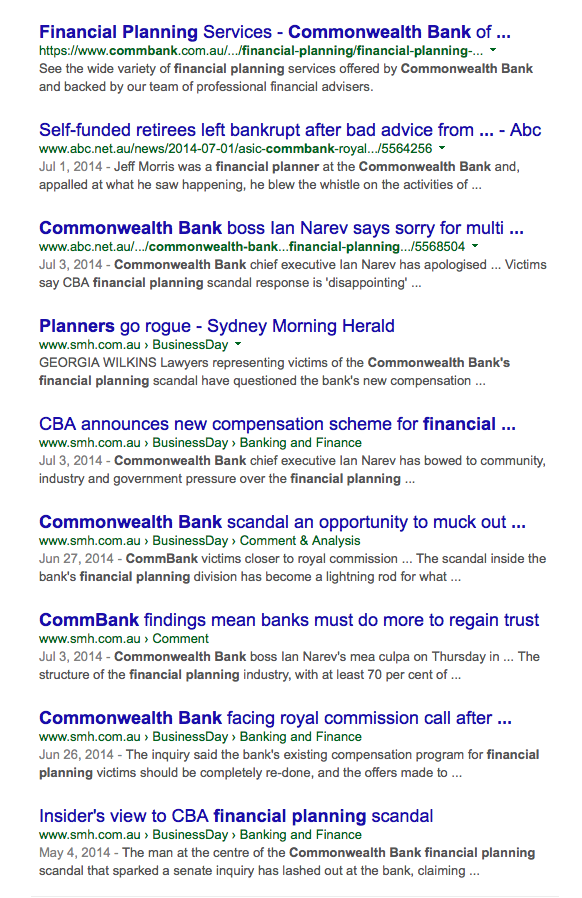
Last week we saw the government roll back the FoFA laws that were supposed to make hidden and trailing commissions illegal. Despite some wordy amendments from Clive Palmer, there is still no ironclad law that insists advisors can’t sell you a product because they get a kickback, not because it’s the very best choice for you.
Challenger brands will win with customer centric marketing
Legislation may not stop the consumer unfriendly practices of big banks. Social media and the empowered consumer will. And new technologies will see challenger brands that build financial product and service offers around what customers actually want will grow at their expense. Coles new deal with GE Capital to offer loans is just the start. I'll leave the last word to a consumer active on social media:
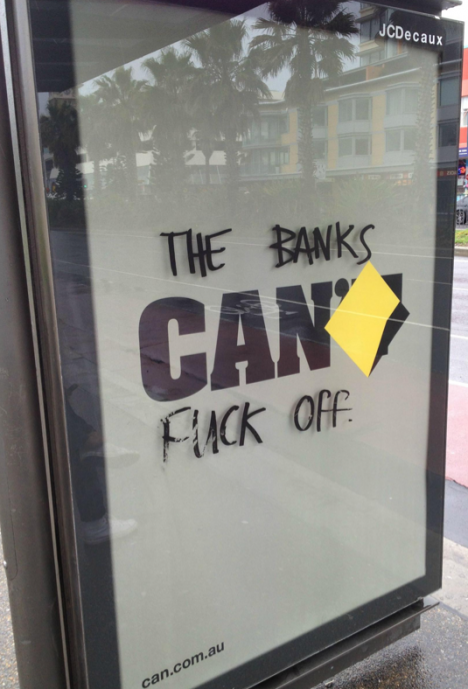

The Lynx effect: Marketers need to help business managers focus on the long term.
Yes, the world is experiencing rapid change and it’s accelerating. However with the average tenure of management in companies constantly getting shorter, retained knowledge is being lost and long term plans are often abandoned before they have a chance to deliver returns. Short termism is rife, sales managers will always tend towards a quick fix to get orders in this month, and financial controllers will naturally be looking for new ways to reduce spending.
Yet the bottom line is it's the businesses that invest year after year in building brands that create the most wealth. The chart below compares the S&P 500 index performance, the blue line, with businesses that own stronger brands, the green line. It proves the businesses that invest in brand building ultimately generate more wealth for shareholders.
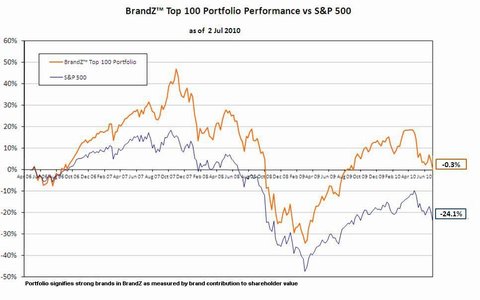
Leading brands outperform the sharemarket
A great example of how building a brand over time makes more money is to look at the work BBH in London did for Unilever. The creative leap of saying a deodorant could make a man more attractive changed the dynamics of the market category. The ad agency took an also ran product to a profit powerhouse over 20 years with the one consistent creative idea; “The Lynx effect”.
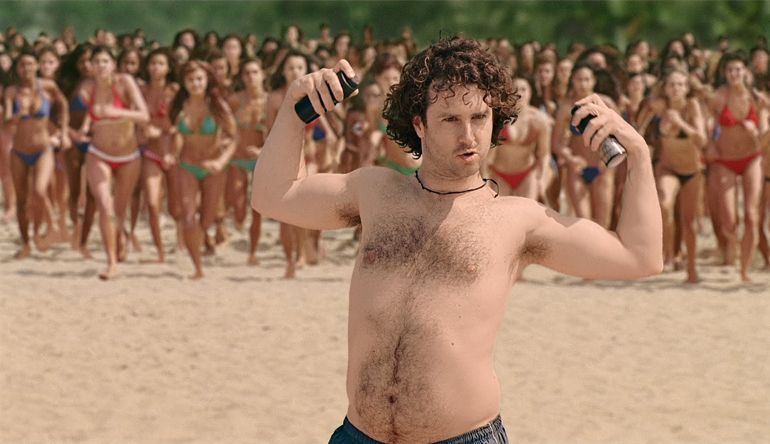
Founder of BBH Sir John Heggarty says “All we did [back in 1995] was change the thinking. It’s more than a fragrance – anyone can make a fragrance – it’s actually about the marketing.”
"I fundamentally disagree that advertising is just selling people stuff they don’t want. I believe that you have to create a competitive advantage with creativity. It seems obvious but I spend so much of my time trying to convince marketers to be more creative.”
Marketing is more art than science says the global advertising guru
Last week in Sydney Heggarty told a room full of businesspeople and advertisers “you all want it to be a science, to get the equation right and go home. But selling stuff has never been a science, it’s about persuasion and it’s an art. It will never be a science. It’s important to remember that we’re all creative. If you’re in marketing, you’re creative.”
Branding today is worth more to a business than ever before
Here is the proof for the finance department. According to Millward Brown Optimor’s analysis, in 1980 virtually the entire value of an average S&P 500 company was comprised of tangible assets (computers, factories, inventory, etc). By 2010, tangible assets accounted for only 30 to 40 percent of a company’s value. The rest is intangible value, and about half of that intangible portion, close to 30 percent of total business value, is attributed to brands. Does your CFO treat your own brand as your single biggest asset?
It truly is the era of creative destruction. ROI marketing is one of the few tools left that can still make a difference and consistently drive business growth. It's worth investing in your brand if you want long term returns.
Read MoreHow many ads do we see a day? Do you remember any?

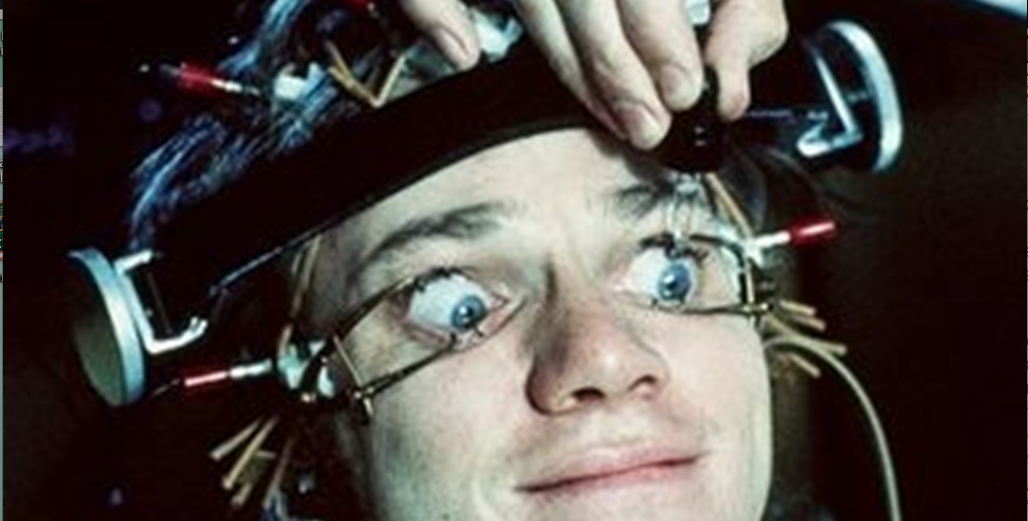
"We've gone from being exposed to about 500 ads a day back in the 1970s to as many as 5,000 a day today."
Jay Walker-Smith, Yankelovich Consumer Research
Hard to believe? Well, if you include the brand label on your undies when you put them on in the morning to the box your new tube of toothpaste came in that evening you can conceive you are exposed to branding messages thousands of times a day. This researcher also counted all the junk mail you probably don't read. But 5,000 ads?
A more reasonable figure for the marketing messages you see and hear daily is probably in the hundreds. Think about your average day, from the traffic report brought to you by Bob Jane T-Mart, the bus back for some show at The Star to the flyer for a Thai massage thrust in your hands as you walk past the poster for all-you-can-eat ribs on Wednesday nights. Then a barrage of down down retail ads on the TV during My Kitchen Rules, sponsored by some diet program. And those meet women in your area now!! ads on the side of your Facebook page late in the evening? What’s that about?
Whether it’s 300 or 3,000, we see so much that we register very little – and remember even less.
So if you were advertising your business don’t you think it might be wise to be distinctive and consistent enough to be recognised for something? Of course you would. So why is it most marketing communications is neither memorable nor consistent? Why doesn’t Qantas still call Australia home?
Why would an insurance company kill off its leading actors?
I can understand why an insurance company is killing off a 3 year ad campaign featuring Rhonda who now has a full time gig in a soap, but why did they drop the memorable jingle earlier? What have they got left to ensure we remember their brand? Who was that insurance company you may well ask? Ahhhhh, Allianz? No, when I double checked it was AAMI. You'd be forgiven if you haven’t been paying attention. Instead of keeping the sign off, "Luckyyyy, your with AAMIeeee", the ads no longer end with the sound of the jingle we’ve grown familiar with over 15+ years. Wonder why?
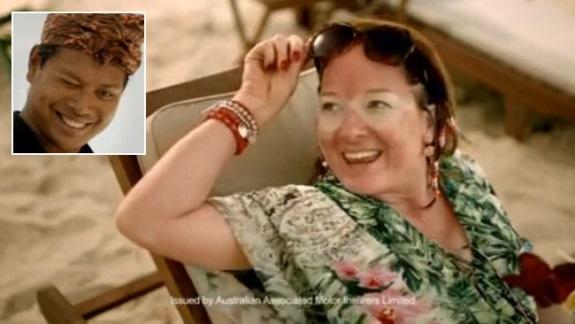
The average tenure of the CEO of an ASX 200 company is around 4-5 years*. The head marketer changes almost as often. Those brand managers on their way up move through more often, leaving behind their mark like my pug does on street posts. Which explains why the labels on all those Lindemans wines changed so often over the last decade. Southcorp then Treasury have destroyed so much brand equity because there were no custodians with a strong thread of brand DNA. Then each new agency wants to make its name, often at the expense of the advertiser.
Why will anyone remember your brand?
I was part of the team that created the "Which bank?" campaign for Commonwealth. It outlasted my time at Saatchi and survived a change of agency, despite their attempts to get rid of it. Brand building is like compound interest, you add a bit every year. And after a while it’s worth a fortune.
'Oh what a feeling' to be a copywriter for Toyota, knowing whatever the concept you come up with, the last 25 years of ads ensure the jump at the end will guarantee recognition by a half asleep viewer. Which is why the most successful marketing campaigns are the ones with legs. They go on and on like a Duracell battery.
It’s a fine balance between testing the new and stretching the offer without breaking the elastic brand. Some brands get it right. While there have been numerous small tweaks and occasional lapses, the VB can and the Coke dynamic-ribbon have survived decades of personnel changes. Less strongly managed brands seem to change annually. So when clients tell me they are getting tired of their campaign or their tag line or the font of their logo, I like to check if it’s busted first.
Sure we live in a world of rapid change, however, it’s more likely business survival and growth will come from product and service innovation and smarter marketing techniques, not from a new typeface. It may be a better strategy to refresh and re-launch rather than completely start again if you want to hold on to some rare customer goodwill. You’re doing well if they already have a small place for your brand pegged out in their cluttered head space.
Mortein tried to kill off Louie the Fly, but after over 50 years the public would have none of it. As John Laws used to say, when you’re on a good thing, stick to it.
Here's a Louie the fly ad from 1962
* Source: A Booz & Company study shows 23.5% of CEOs of ASX 200 companies left in 2011. Median tenure is 4.4 years and falling.
Read MoreThe top 20 valued brands in 2014
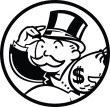
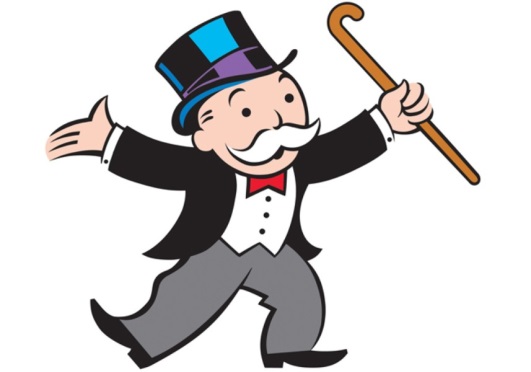
The world's most valued brands include some surprises. Coke is no longer it, in fact in the last year the brand value of Coca Cola has actually shrunk by 1%. Might not sound like much, but we are talking US$50million. A few more great ads like they used to make could have made a big difference to the bottom line. While there's a lot to lose there is a lot to be made by building a brand.
Innovation and marketing build brand value
Consider the year on year growth of Samsung as it continues to invest in product innovation and marketing. Now the number 2 in the world by brand valuation, Samsung increased it's value by US$20 billion over the last year. Coke slipped from number 9 to 12. Check out US telco Verizon, up from 10 to 5. Expect to hear more from them in Australia.
What are the highest valued Australian brands?
The value of a brand can be greater than the parts and isn't necessarily a reflection of the relative size of the business. While Australia's largest listed company by share market value is BHP, it doesn't rate on the scale for the book value of it's brand. The business with the highest valued brand in Australia is Woolworths. Woolworths sold $21 billion of food and liquor last year. The Woolworths brand is now ranked just outside the top 100 global brands and is valued at US$10.8 billion.
Racing up behind in second place is a newly invigorated Telstra which has re-invested, refreshed and relaunched it's brand over the past couple of years. The several millions spent on marketing has been rewarded, Telstra jumping 34 spots globally with an increase in brand value of over US$2.2 billion.
The banks brand valuations aren't the same as their market cap, but the shifts in brand value are a leading indicator of performance. ANZ is the smaller of the big 4 banks yet it has had a higher brand valuation for the last few years. But it's slipping, which helps give us an idea of which bank will grow faster in the coming years. ANZ, NAB and CommBank are all losing brand value and Westpac is climbing as they leverage stronger brand appeal to hold and grow customers.
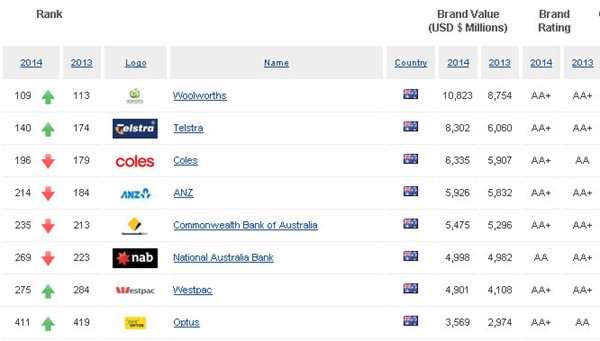
So when you're in the boardroom discussing the pros and cons of discounting to drive sales or investing in marketing, show your peers what a difference a brand makes to the bottom line.
Read MoreThe business benefits of a strong brand
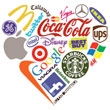
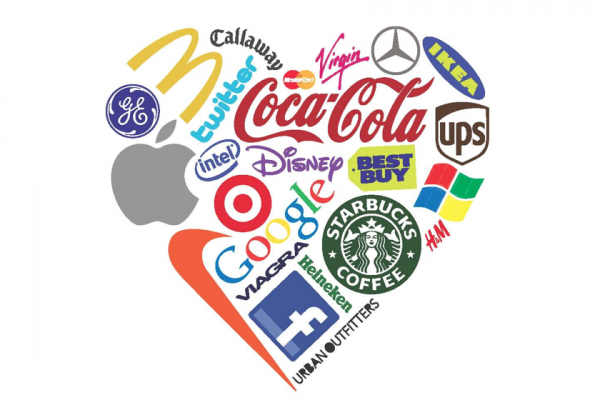
Remember just over a decade ago when IBM only sold big computers? Today most of us have more computing power on our smartphone and IBM is a consulting services business. UNO helped IBM make the transition to a service provider to mid-sized Australian businesses with a 4 year content publishing programme.
Many brands are having to change to survive
A few years ago if you wanted to find a business service you looked up the Yellow Pages. And if you wanted to make a call when you were out of the office you had to find a pay phone. It's amazing when you stop and think about how much the Internet has changed the way we do business.
Some once mighty brands like Kodak and Darrel Lea have disappeared, while others have successfully transformed what they offer. Have you taken the time to reconsider what your brand stands for in today's competitive market?
A brand is more than a name and logo
Your brand is what the public thinks you stand for. How you present your business shapes how your brand is perceived. Your brand is how your customers feel about you – the impression you make. It's how you look and how the way you speak. It's the unique way you reveal yourself to customers, from your choice of words to the typeface and colours you use.
If your business has been around for a decade then what your business does may no longer be well represented by what your brand is representing. Today's brands are distinctive yet flexible. Consider wWhat do Apple, Google and Virgin have in common? An ability to sell products and services across virtually any category by leveraging strong brand images that represent values that can be stretched as innovations are brought to market.
Strong branding is a smart business investment
Disciplined brand creation and consistant brand marketing is proven to deliver returns. Once you've differentiated your brand positioning, today you need to remember sales is no longer a linear pipeline, the power now lies with the customer. So for your brand to create wealth it needs to be discoverable across multiple touchpoints. With consistancy, the ROI from building a differentiated brand isn't just financial.
A strong differentiated brand enables the business to:
• Overcome competition based purely on price
• Prevent or slow decline of sales
• Hold on to existing customers
• Build sales leads
• Change perceived quality of your product
• Revitalise customer appeal
• Change company culture and boost employee morale
• Enter new markets
• Speed up product acceptance and trial
• Morally discourage competitors’ salespeople
• Raise capital more easily
• Sell a business more easily
See UNO's proven Formula for Growing Challenger Brands.
Read MoreWho owns the world's best known brands?
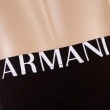
"Brands are intangible assets and account for, on average, 75% of the value of a company."
– Blake Deutsch
Investors don't value what businesses make. The sharemarkets around the world have placed the most value not on production, rather they value the power of brands. Most share prices are a reflection of the future earning ability of a brand. The brands people most recognise also get the most votes from investors.
Just ten global companies own a surprising number of the world's best known brands.
From cat food to confectionary, shampoo to fragrances, each of these companies use their marketing skills to create shareholder value. As well as the dairy brands you probably associate with Nestle, the Swiss company also owns some of the most renowned brands in other diverse categories. Most people are surprised to see just how many categories just ten global corporations are active in. (View on Pinterest):
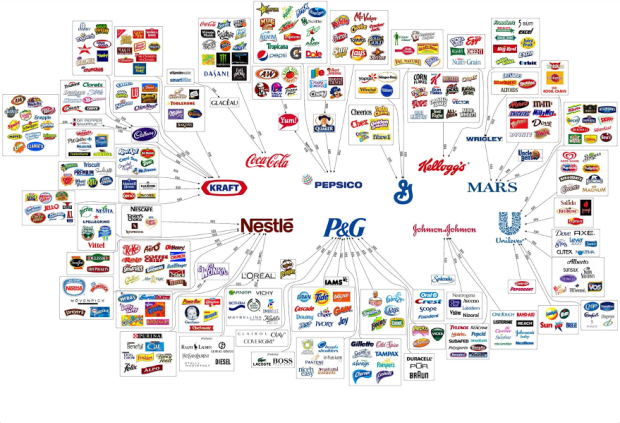
See larger image on Pinterest.
The big benefit of differentiating your brand is pricing power
The same marketing disciplines that are used to by Nestle to differentiate Kit Kat are leveraged by Nestle in other categories like fragrance. Georgio Armani Beauty is a Nestle brand, with Cate Blanchett its public face. Differentiation is why Nestle can charge a premium for perfume, Purina pet food and Nespresso coffee capsules.
In an Internet enabled world, where prospects can literally buy anything from anyone, it is now essential to differentiate your brand. It is differentiation that will ensure long term sustainable and profitable business.
Big brands have the world covered, which opens market niches to the nimble
The good news for challenger brands is the majors have slimmed down their portfolios over the last decade to concentrate on a smaller number of brands they can manage globally. So if you now apply the same proven brand marketing disciplines in niche markets you can most likely do so knowing there will be less competition from big global players.
As for Armani the fashion brand, it's still a family owned business with Georgio, it's 78 year old founder, still at the head. See how UNO grows Challenger Brands, including a number of successful Australian family businesses, just download our free eBook.
“Brands are intangible assets and account for, on average, 75% of the value of a company.” - Blake Deutsch - See more at: http://www.r-co.com.au/brand-building-for-business-success/#sthash.XGEEw6MT.dpuf
Who tweets about brands?
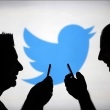
Technology companies get the most tweets
If Twitter users are image shapers, setting the trends in awareness in our society, it follows that marketers want to see their brands tweeted. Research by Nielsen has for the first time shown which brand categories are most tweeted, and who is doing the tweeting. Technology companies lead, followed by restaurants.
How to get people tweeting about your brand?
Be seen on TV. The age old adage, fame is the name of the brand game is underlined by the fact the brands people tweet about are the brands seen on what is still the world's mass market medium – TV. Perhaps this explains why the biggest brands still invest in TV advertising, it's the one medium that they can still use to shape mass opinion.
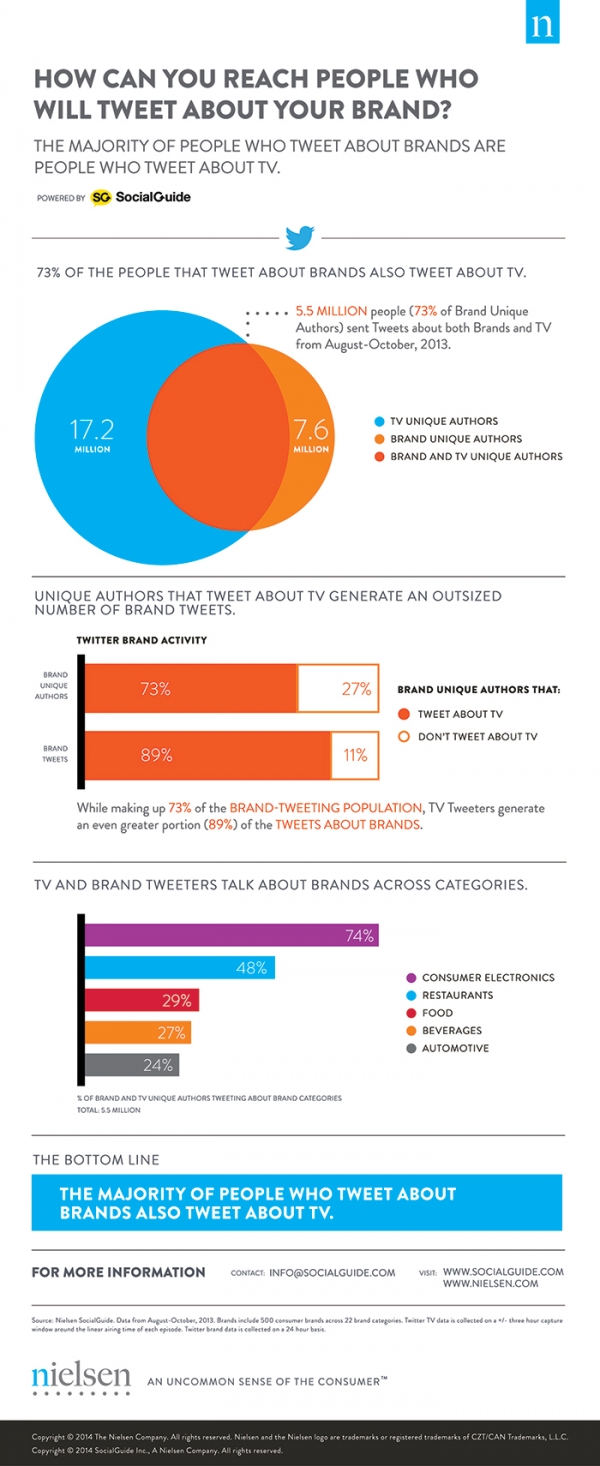
What Australians look for when shopping online

Myer missed the post-Christmas online retail rush, and it was BIG. On 1 January, The Australian Retailers Association put an update out on expected post-Christmas sales from Boxing Day to 14 January to be $15.1 billion.
You may have read Myer's site was down for over a week. CEO Bernie Brookes told shareholders it wasn't a big deal because online represents just 1% of Myers sales. I'd be wary of investing in a retail business that doesn't realise the importance of e-commerce.
6.4% or retail shopping is done online
In the year to November 2013, Australians spent $14.6 billion* on online retail. This level is equivalent to 6.4% of spending with traditional bricks & mortar retailers. Some discretionary spending categories are already well into the double digits for online sales. Despite Bernie's spin about the insignificance of his own online sales, in fact Myer's business plan has a 5 year target for online sales of 10%.
I've been brushing up on online retail best-practice
Those retailers that did get a share of the online post-Christmas sales rush now have stats on what worked for them. Fortunately we can all learn from what Australians did over Christmas thanks to a survey by Credit Card Selector of online gift purchases. Here are some of the insights on what shoppers are seeking online...
Why Australians purchased Christmas gifts online rather than instore
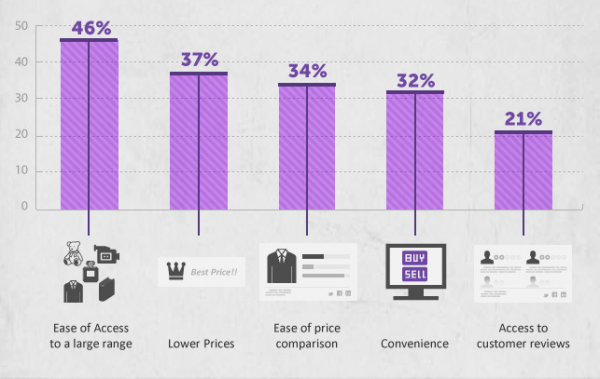
How shoppers find online stores
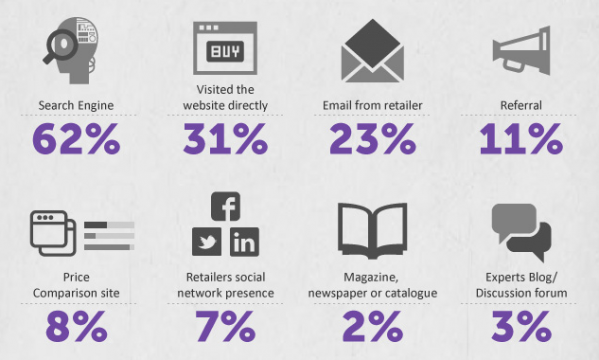
What gifts shoppers bought online in 2013
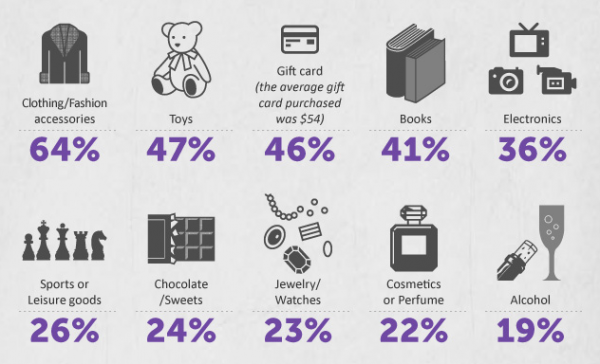
What would make an online shopper buy again
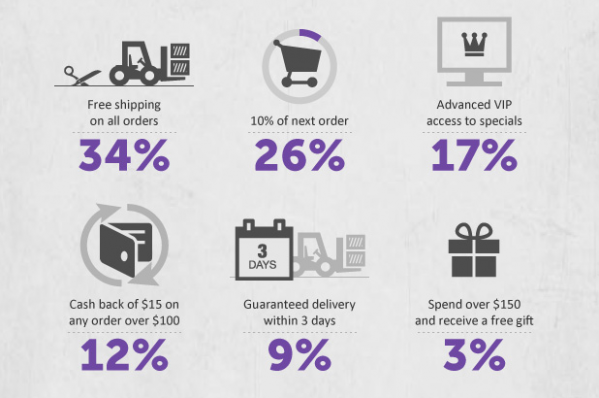
* Source: NAB Retail Index
Read MoreHow can you measure a marketer's contribution to the business?

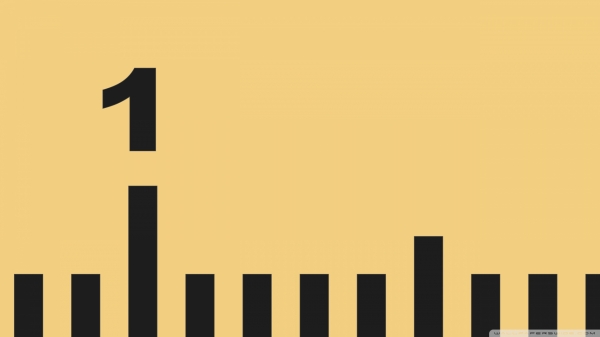
CEOs and business owners often ask me what’s the best way for them to measure my contribution to their business. The business of business has never been more complex, yet we are actually in an era where marketing is one of the few levers left that management can actually control to engage customers. And that’s how a marketer is best judged – by the improvement of the brand’s engagement with customers.
Marketing is all about the customer. The customer
Don’t just take my word for it.
A survey of CMOs across 92 countries reveals consensus – the most valuable measures of marketing’s contribution are in the areas of engagement and “brand health”. Health being a bit of a catchall word for the grab bag of KPIs that show how much customers recognise you, like you, value and understand what you stand for. They also ranked the capabilities that will be more important to marketers over the next 5 years.
KPIs for measuring marketing effectiveness
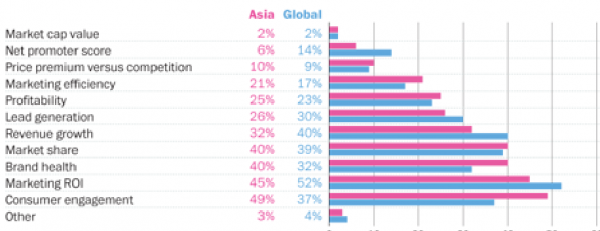
Source: The Marketing 2020 Report, Effective Brands survey of 10,000 professionals across 92 countrie
The capabilities most important for marketers in 5 years
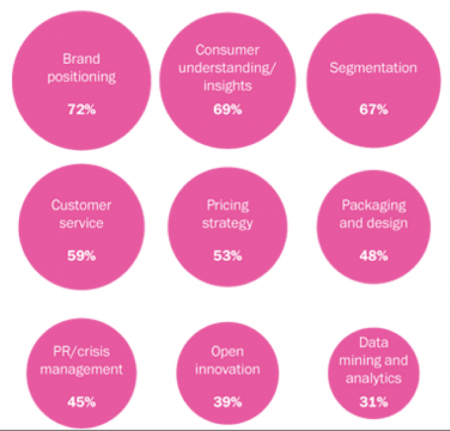
How to manage the 9 biggest marketing challenges
Here is how we manage the biggest marketing challenges today:
- What do you stand for?
Define your differentiated positioning in the market that not only you have a passion for, enough prospects will pay for. - Know your customer
Base your story on what customers genuinely care about that you can deliver. The features with benefits that ideally are unmet by competitors, or unknown to prospects. Think like a challenger brand. - Define your target audiences
Don’t attempt to sell something to everyone. It’s the era of niches within subgroups. Align your messages to what each customer target cares about. - Customer service
Never over promise, always over deliver on expectations.See some of the proven ways to foster customer loyalty here. - Pricing strategy
Remember pricing is a two way lever, framing value to maximise profit is the game, not cost plus pricing, that was the era of mass market production line manufacturing. Be nimble and exploit unique profit opportunities from short term market mispricing. Then find another. - Packaging and design
Sell the sizzle. Creativity and a consistent brand image increases cut through, recall and engagement and helps you command a price premium. Bad ads are bad for business. Stand out and apart. Safe isn’t just boring, it’s high risk. - Be prepared for a crisis
The Internet now makes everything public and places the power in the customer’s hands. Have a plan. Tell the truth, you’ll be outed if you don’t. Make sure you know your legal position with social media. - Innovate for growth
Or die. Big business struggles to change, this is the great advantage for those who aren’t market leaders. Become a challenger brand by zigging while the category zags. See the bottom line benefits of innovation as determined by AIM, they are significant. - Data
We are now in a digitised world. The companies that have the most data on people have the power to own their custom. Whether you are a manufacturer, distributer, service business or retailer, the business that makes the most of data will control the money.
Read More
Email outperforms social media for new business, by far


McKinsey has just published some research I wrote about last year on the ineffectiveness of social media for customer acquisition. While marketers have increasingly jumped on the social media bandwagon, the stats show the effectiveness of Facebook and Twitter as a method of acquiring customers has remained flat. In contrast, email’s share of customer acquisitions has shot up over the last three years by 700%.
% of customers acquired by channel
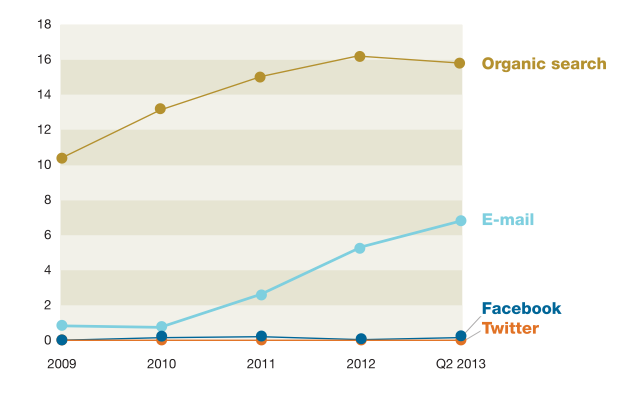
Source: Custora, E-Commerce Customer Acquisition Snapshot, 2013. McKinsey iConsumer survey
The tip for challenger brands here is to zig when the others zag. The more your competition and every other marketer swamp social media with activity, the less likely you will be noticed. Personally, every time I now venture onto Facebook I am actually getting rather tired of being targeted by advertisers for diets, wine and dating.
Facebook is out of favour for new business
In the quest to deliver Facebook shareholders a profit, marketers are being encouraged to spend big. Meanwhile Facebook users are beginning to move on. The statistics show us those marketers who continue using email can expect 40 times the customer acquisition than from Facebook and Twitter combined.
That's not to say I'm recommending mass email blasts. The frequency of spam in your inbox is why marketers now have to be more discerning in what they send and who they send it to. For instance, Qantas has a frequent flyer database of 10 million members, slicing and dicing and and segmenting offers with hundreds of individual creative executions.
When Email marketing, remember what’s in it for the customer
Most of us hate spam. Prospects and customers however generally appreciate receiving an email when it concerns something of value to them. Depending on your category, different days of the week achieve higher responses. And of course, research on brand recall has proven the more creative your message, the more your brand will be remembered.
So make sure your email campaigns are well crafted and you offer a real benefit aligned to a genuine customer need. In other words, smart marketing not spam.
Read MoreHow Private Label hollows out brands

Australia is unique for the oligopolistic power of just two supermarkets. Coles and Woolworths have 80% market share of an industry valued at A$80+ billion.
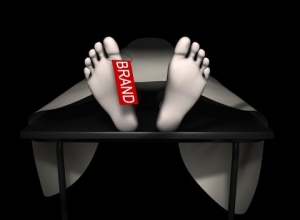 In the UK, the two major chains Tesco and Sainsbury have 48% and the US equivalent is just 20%. Consequently when our retailers brought in management from the UK to apply the successful Private Label model developed by Tesco and Asda they did so with the potential to have a significantly bigger impact on our market overall.
In the UK, the two major chains Tesco and Sainsbury have 48% and the US equivalent is just 20%. Consequently when our retailers brought in management from the UK to apply the successful Private Label model developed by Tesco and Asda they did so with the potential to have a significantly bigger impact on our market overall.
Private label is no longer cheap generic Black & Gold commodity lines, it's the key to the retailers growing profit at the expense of both brands and producers. Whether you are in the FMCG business or a service business, the Private Label strategy is one that threatens every business as the company with the most customer data gains ownership of the sales process.
Global FMCG brands now struggle to turn a profit in Australia
In the last year major FMCG brand owners like Unilever and Nestle have publicly lamented their lack of power in this country to compete with the oligopoly's own brand agenda. While we have more supermarkets per capita than the US and nearly 3 times as many as the UK, the 10,000 Australian independents have so little share and such disparate distribution requirements for fulfilment they offer brands little scope for profitable scale.
Most shoppers don't realise they're being had
The trend to consumer demand for more brand choice and gourmet choices is being matched by Woolworths by it's purchase of Macro Wholefoods and roll out of Thomas Dux stores. Not only have Woolies out-merchandised the Harris Farm model, they've done an even better job in wine.
Together, Coles and Woolworths have over 50% of the liquor market, not just through retail store brands like Dan Murphys, Liquorland, 1st Choice, Porters, Theos and Vintage Cellars, but the big online database driven direct marketers like Cellarmasters and Langtons. Here is how Choice sees it:
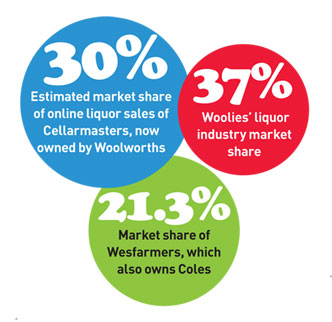
This dominance has enabled the two majors to dictate what brands you can buy. They have delisted most small vineyards and substituted them with a cynical excercise in facadism. There is a plethora of over 240 Private Labels masquerading as boutique wines giving the impression of choice. They are merely made-up attractive wine labels stuck on bottles of mass produced vin ordinaire. From Abbey View to Willowbrook, see the list of fake wine brands for yourself.
Now they are using their data Intelligence to segment and market everything from Private Label credit cards to health insurance. For instance, they use loyalty card tracking of grocery purchases and the knowledge that if you eat red meat you are a better actuarial risk to target the insurance sales process. What insurance company can compete with this big brother view of Australians?
How does a business compete with this onslaught? A study by international branding expert Professor Mark Ritson of Melbourne Business School gives some insight...
The formula for Private Label success
• Lack of perceived differentiation between brands in a category
• Lack of value innovation of incumbent brands
• Increased proportion of price promotion activity
• Available production capacity
• For me products
• Smart retailers
• Competitive retailers
• Concentrated retailers
The power of the retailers in this market allows them to demand more price promotion from brands, which leaves little in their budgets for brand building marketing campaigns or new product innovation. In no time the brand values are hollowed out, leaving the category ripe for Private Label substitution.
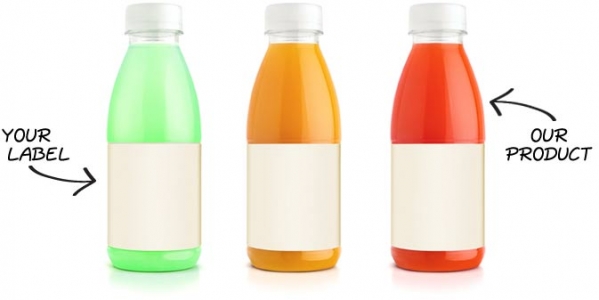
The Seven stages of Private Label dominance
Stage 1: Price-based generics (Home Brand, Black and Gold etc)
Stage 2: Copycat (Penguin vs Puffin biscuits)
Australia has passed here and well into the next stage.
Stage 3: Good, Better, Best (Tesco Value, Tesco, Tesco Finest)
Stage 4: Flanker brands (brand extensions to attract brand 'switchers')
Stage 5: Category leaders (Sainsbury Extra Special Tea Bags)
Stage 6: Non exclusive (expanding beyond the store)
Stage 7: Legal monopoly
The supply side to killing brands
The no-name supplier is offered a carrot to become the stick that wacks the known brands.This business is often an existing maker of their own known brand line. Why would a Heinz for instance supply Woolies Private Label baked beans? This is what attracts them:
- Usually opportunistic origins
- Often based on excess capacity utilisation
- Any contribution over variable costs of production is seen by management as good
- Less profit... but still profit
Where it leads is usually not so positive. Here is what happens when the no-name supplier exceeds production capacity:
- Increased production costs for same or less profit
- Cannibalisation of existing branded product
Gradual strategic 'split':
- From brand builder to PL supplier
- Internal resources get utilised
- An implicit strategic change
Change of business from:
- Brand builder / innovator / consumer focus to
- PL supplier / cost cutter / business customer focus
Private Label and the weaker brands are consolidated:
- As PL grows weaker manufacturer shares decline
- Brand fights brand – not PL
- To maintain brand and shelf presence, 'lesser' products become 'propped' up with disproportionate costs
- Resources become further diluted
- Finally, once mighty brands are de-listed by the duopoly
- The retailer approaches a new potential supplier for PL, and so it all repeats
How high can Private Label go? (How low will brands fall?)
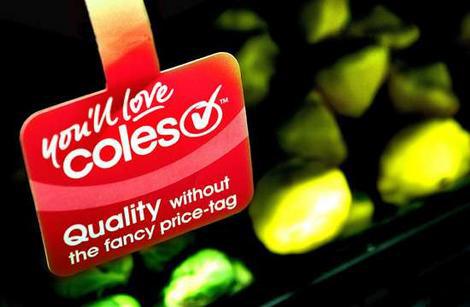
Private Label share in Australia today
23% is current floor
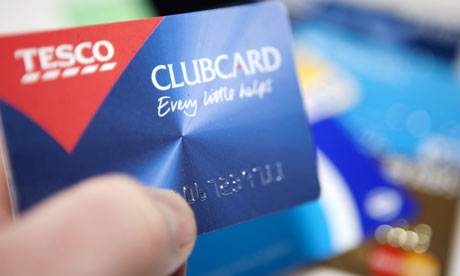
The UK is in the middle
50% Private Label
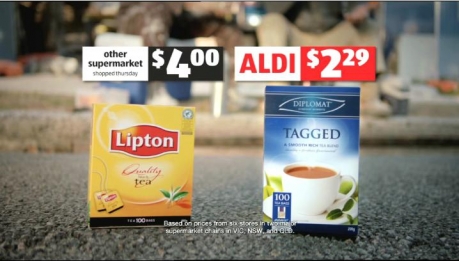
Theoretical ceiling
95% of product in Aldi is Private Label
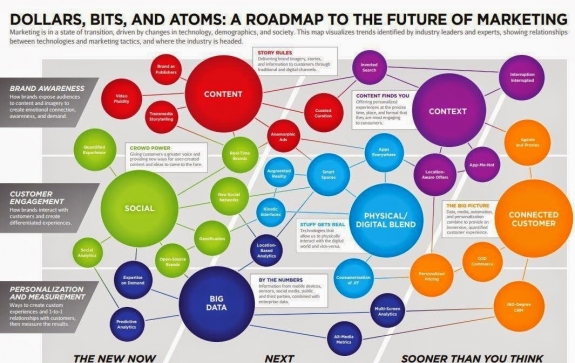

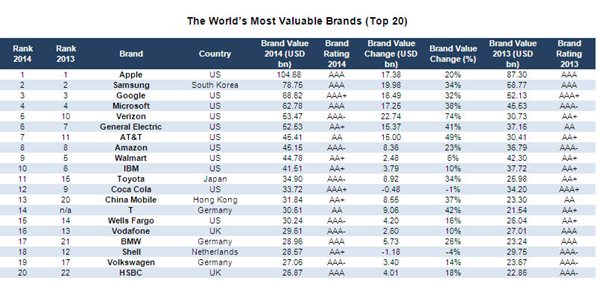
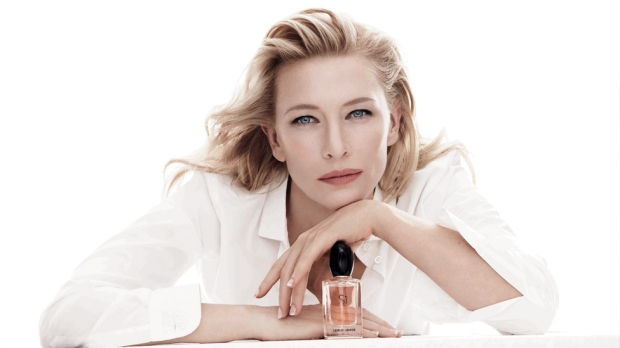



Scan the QR code for our contact details.
Download the Neoreader app.
© COPYRIGHT 2013 UNO marcomms Privacy